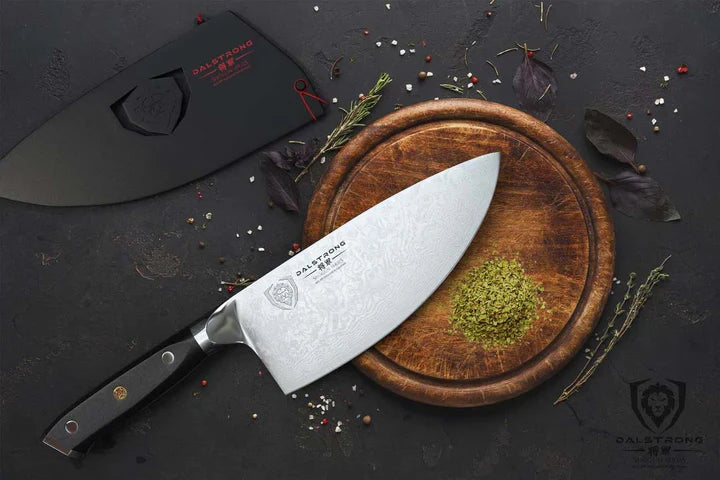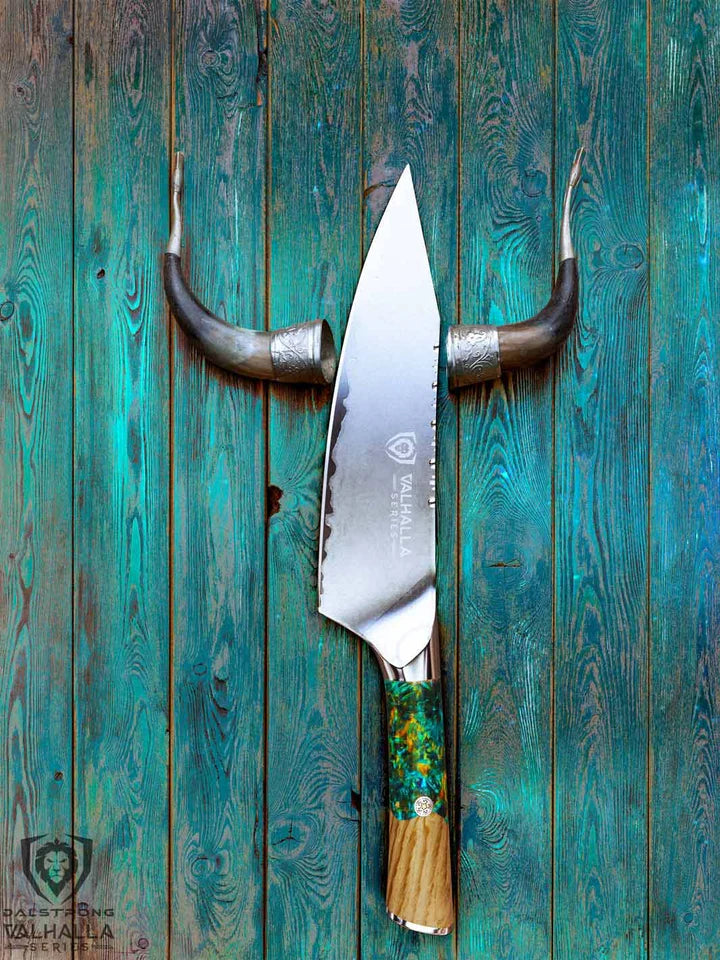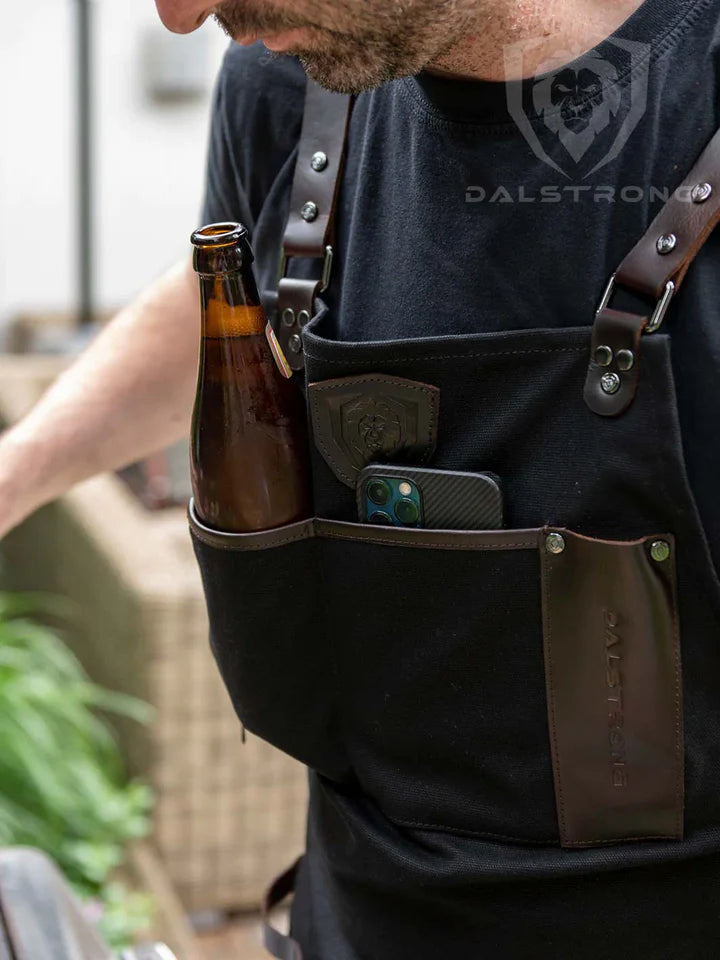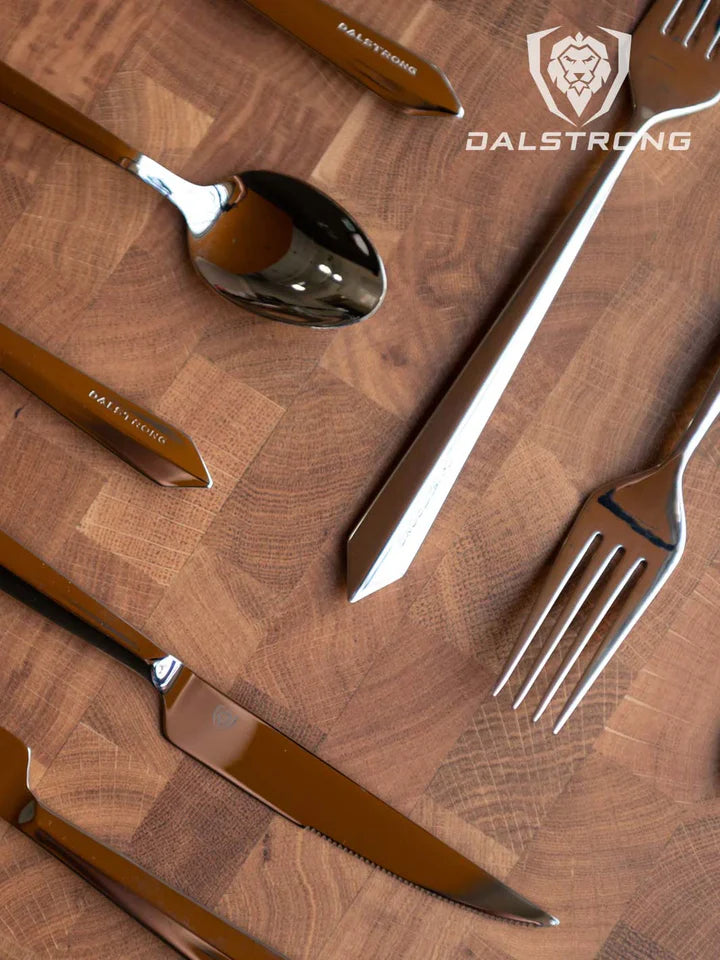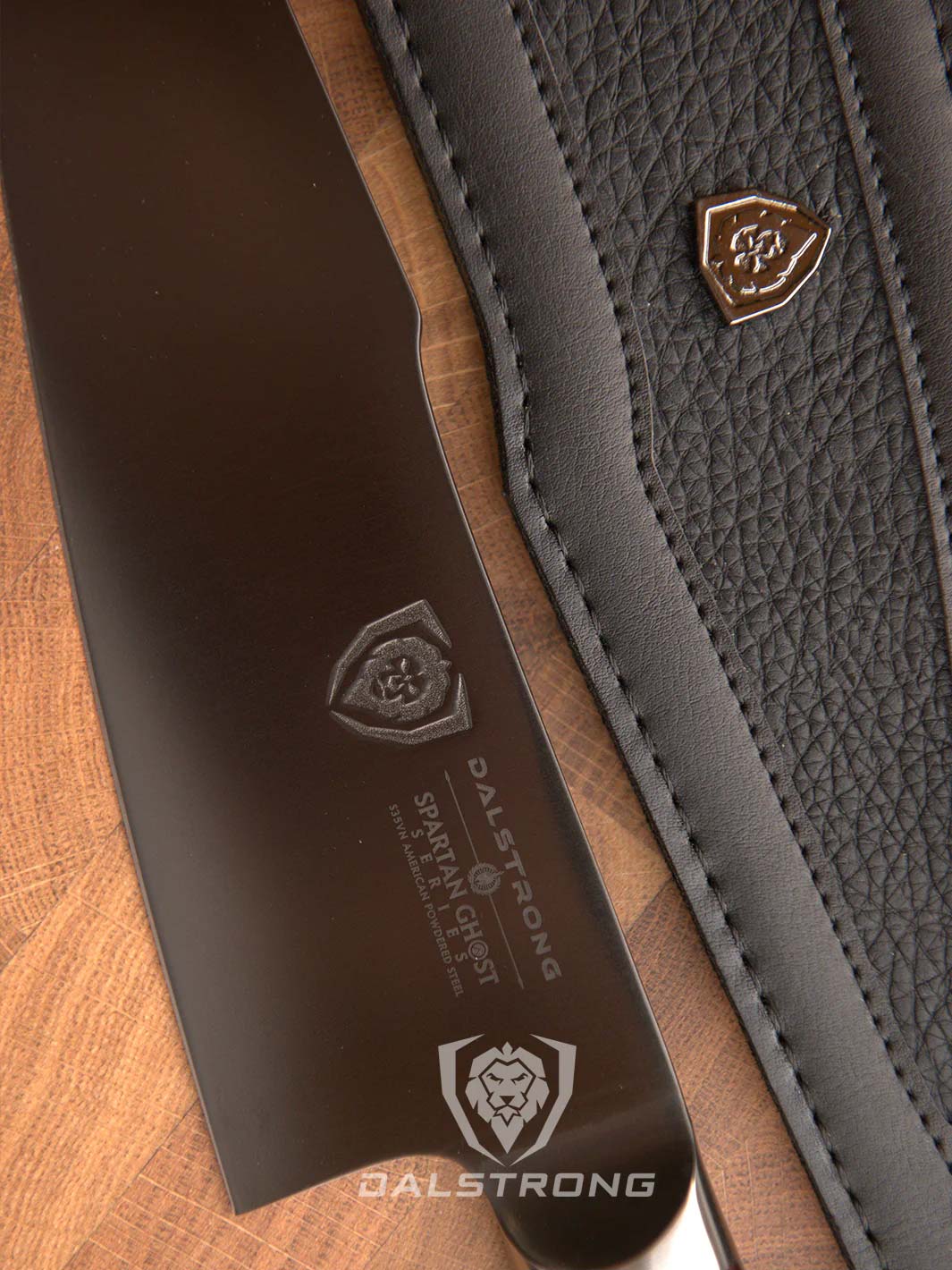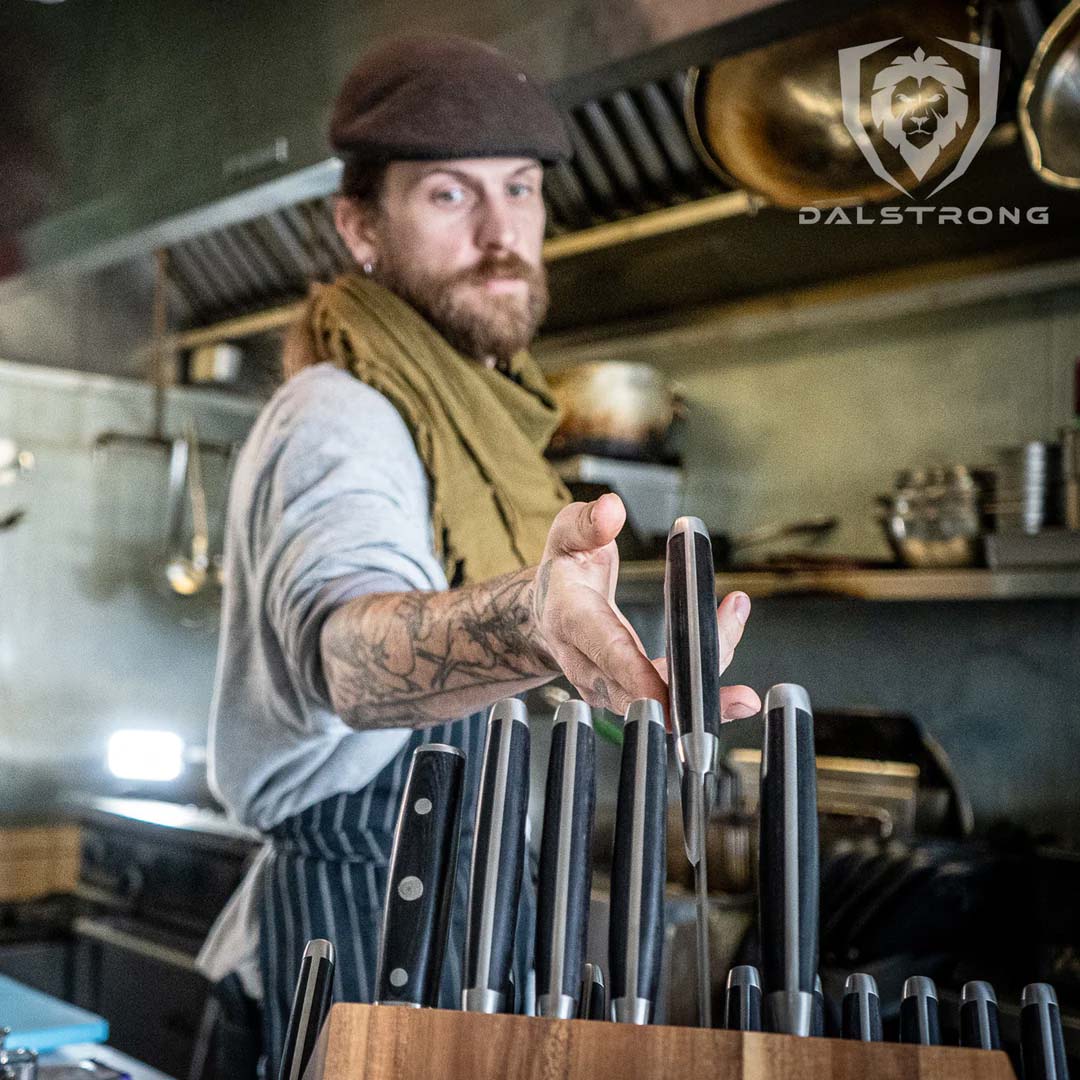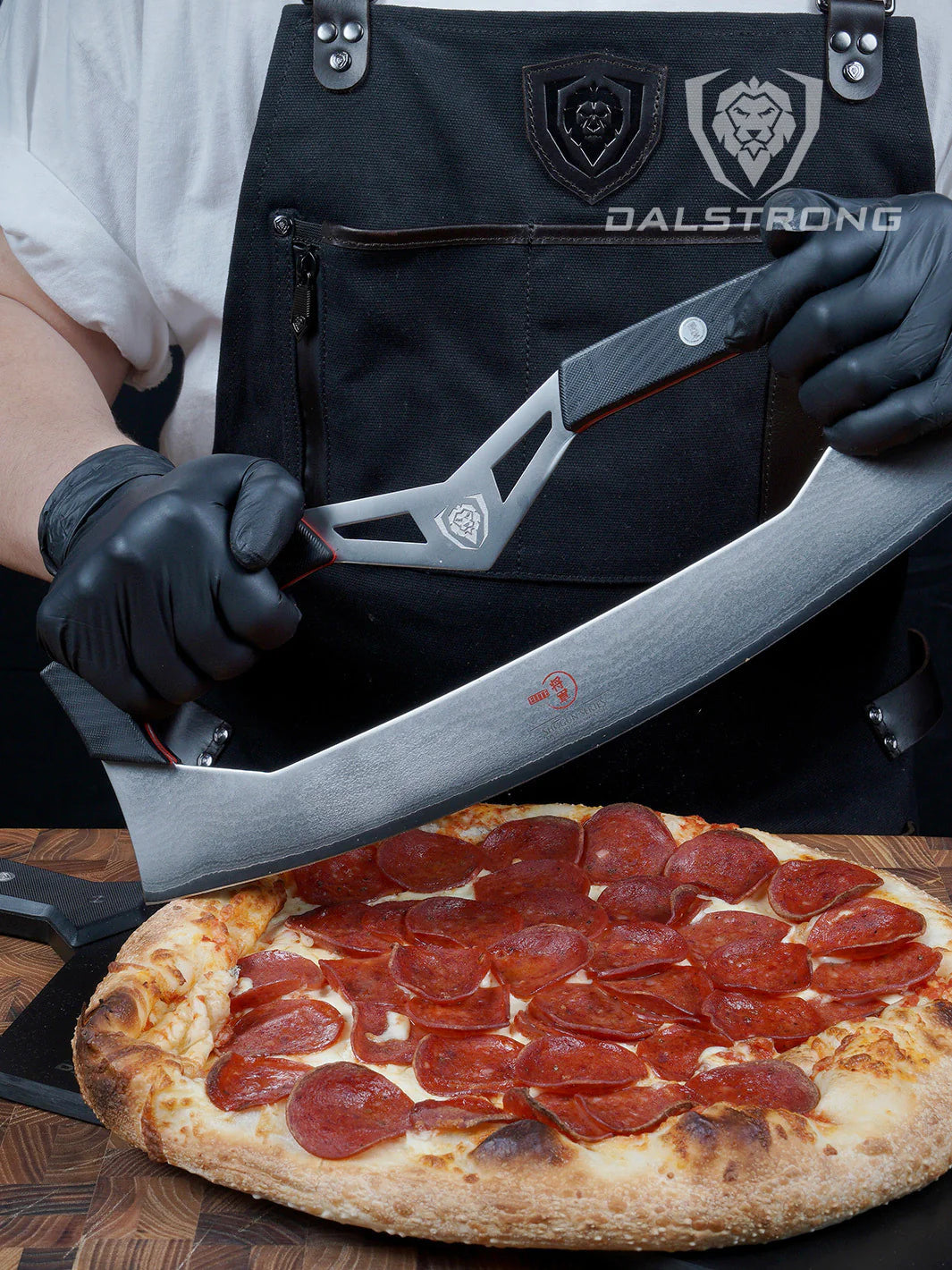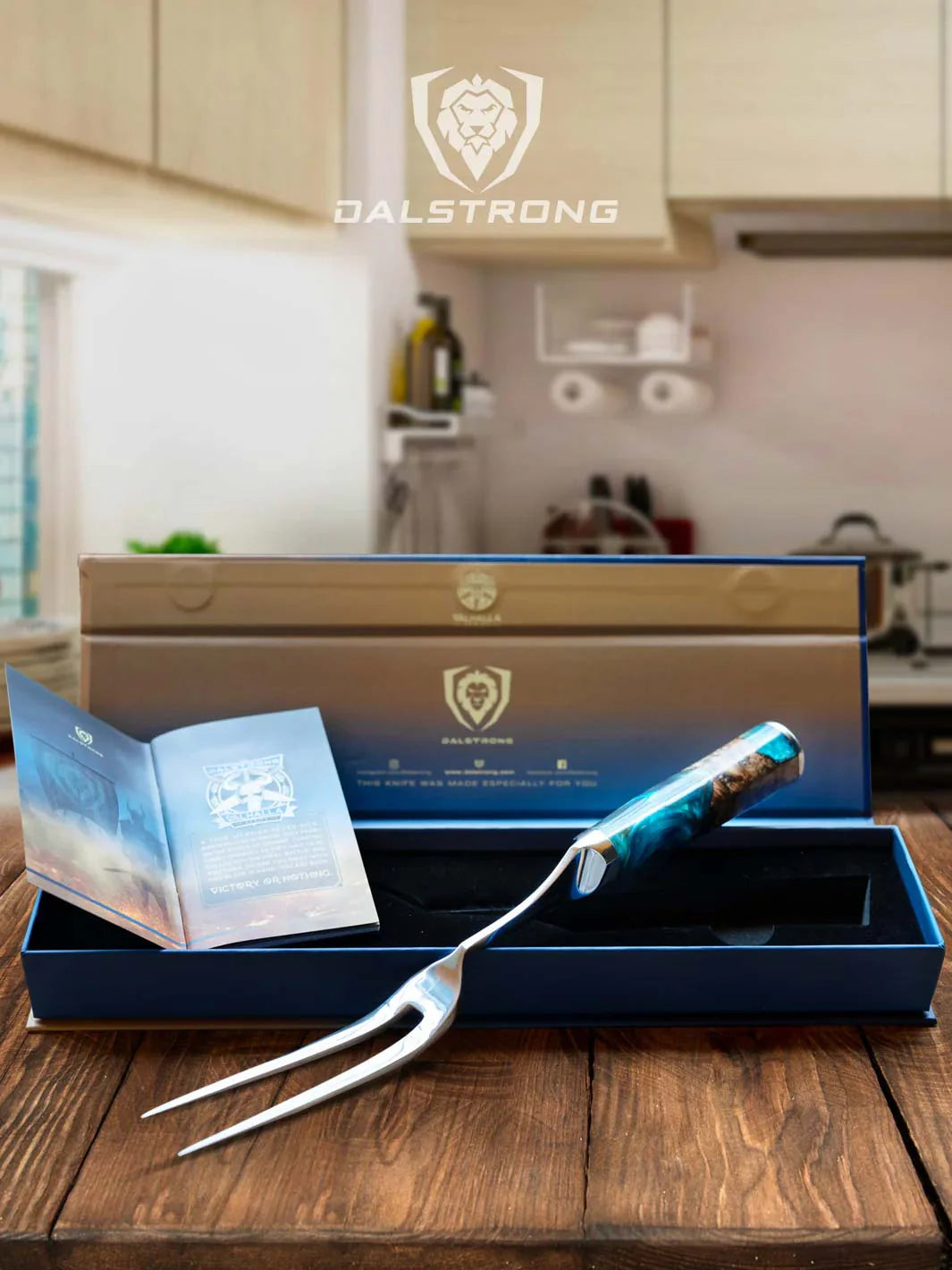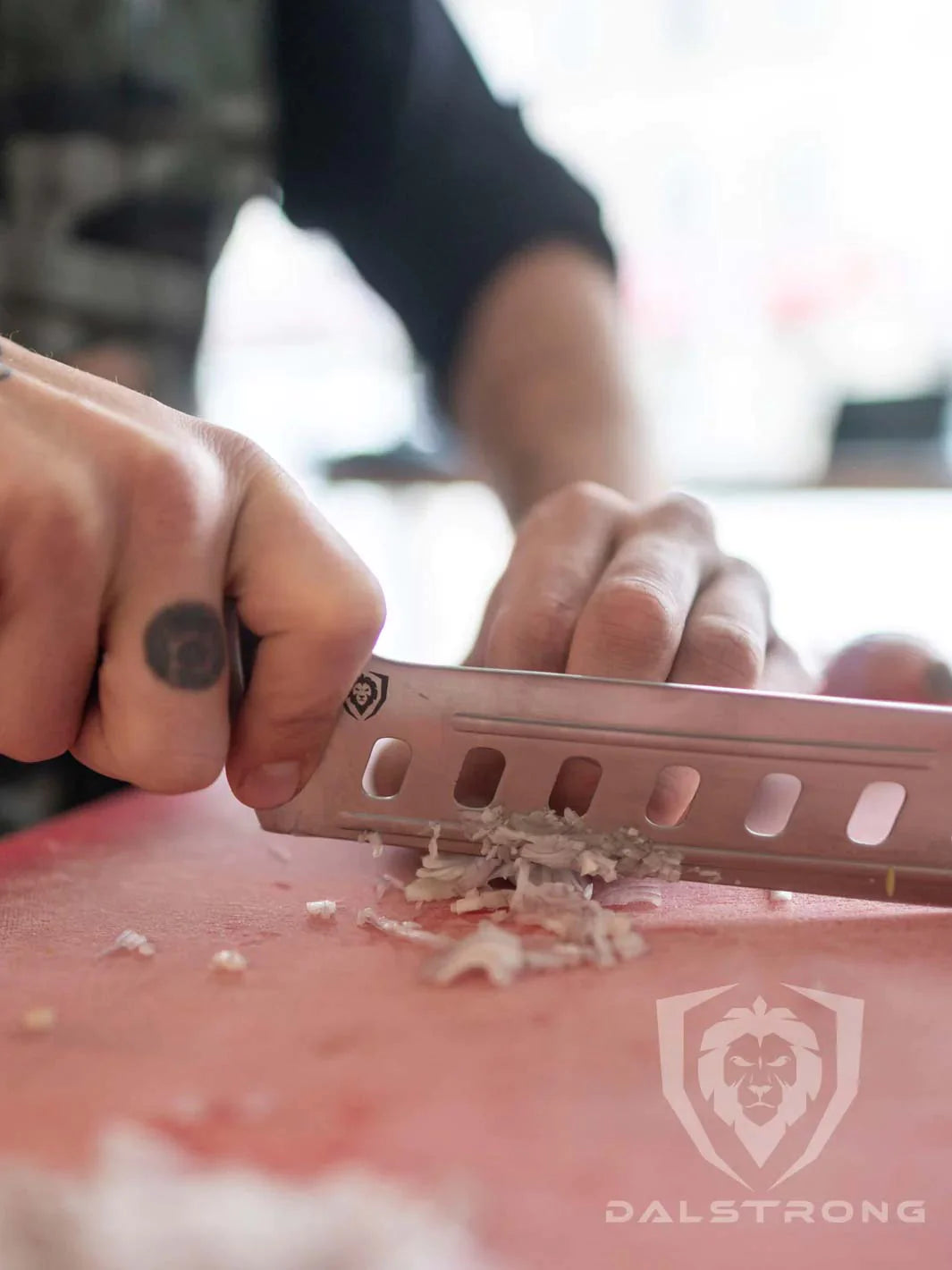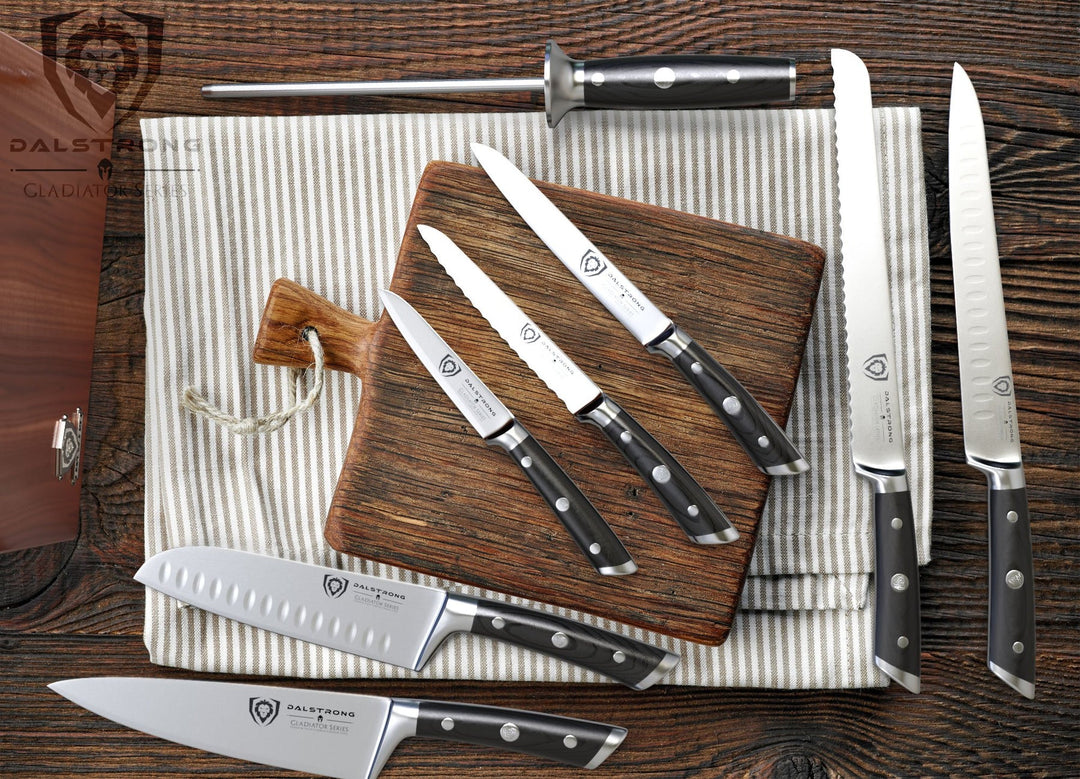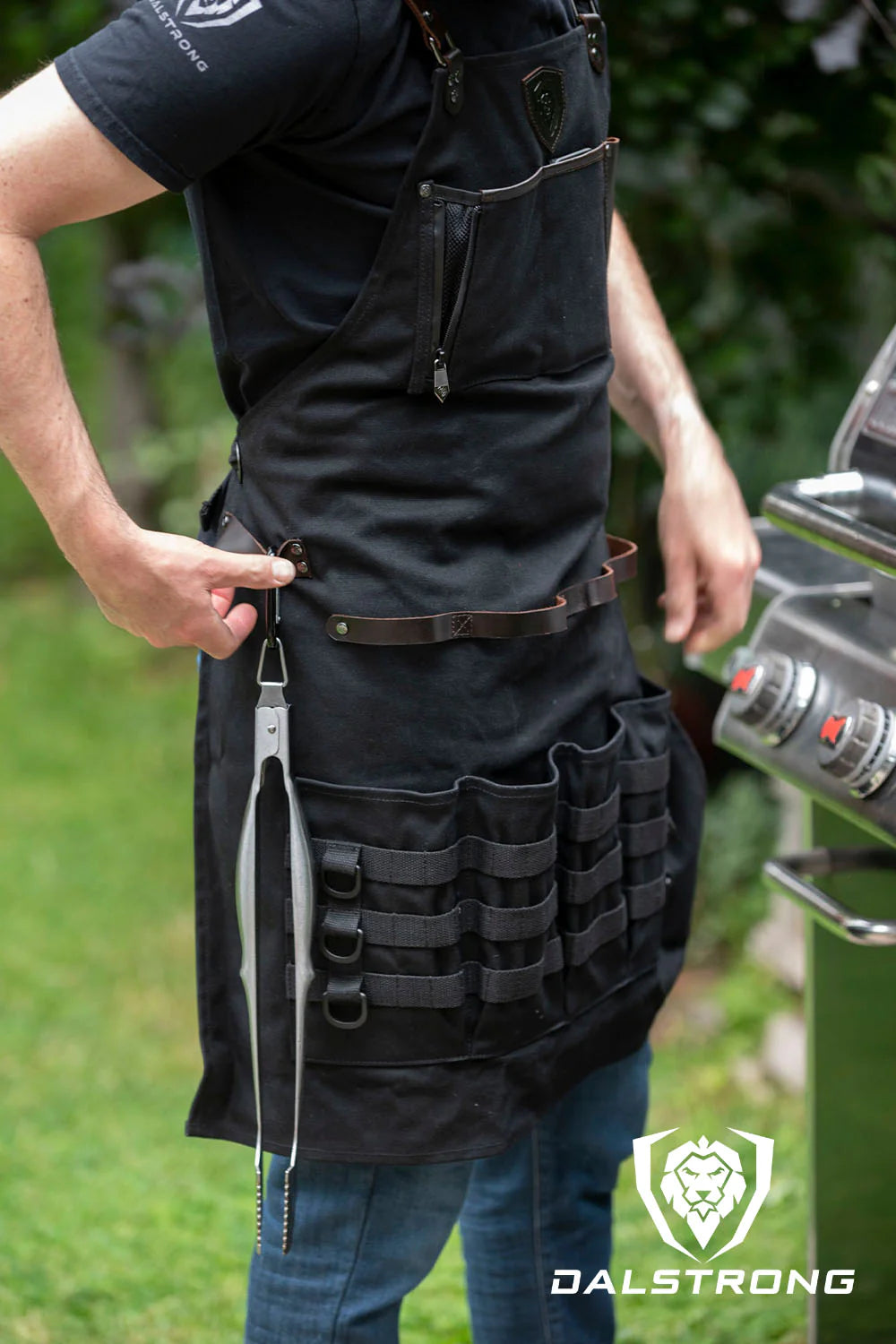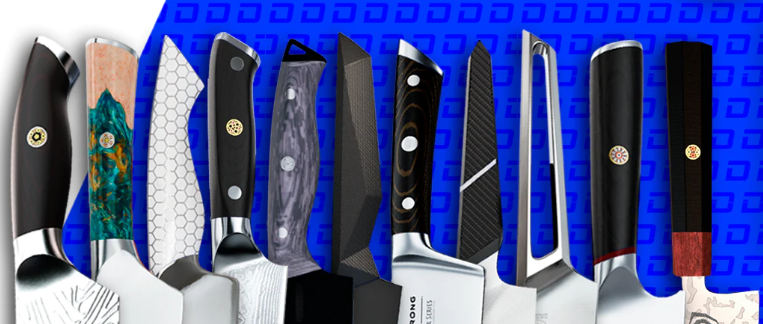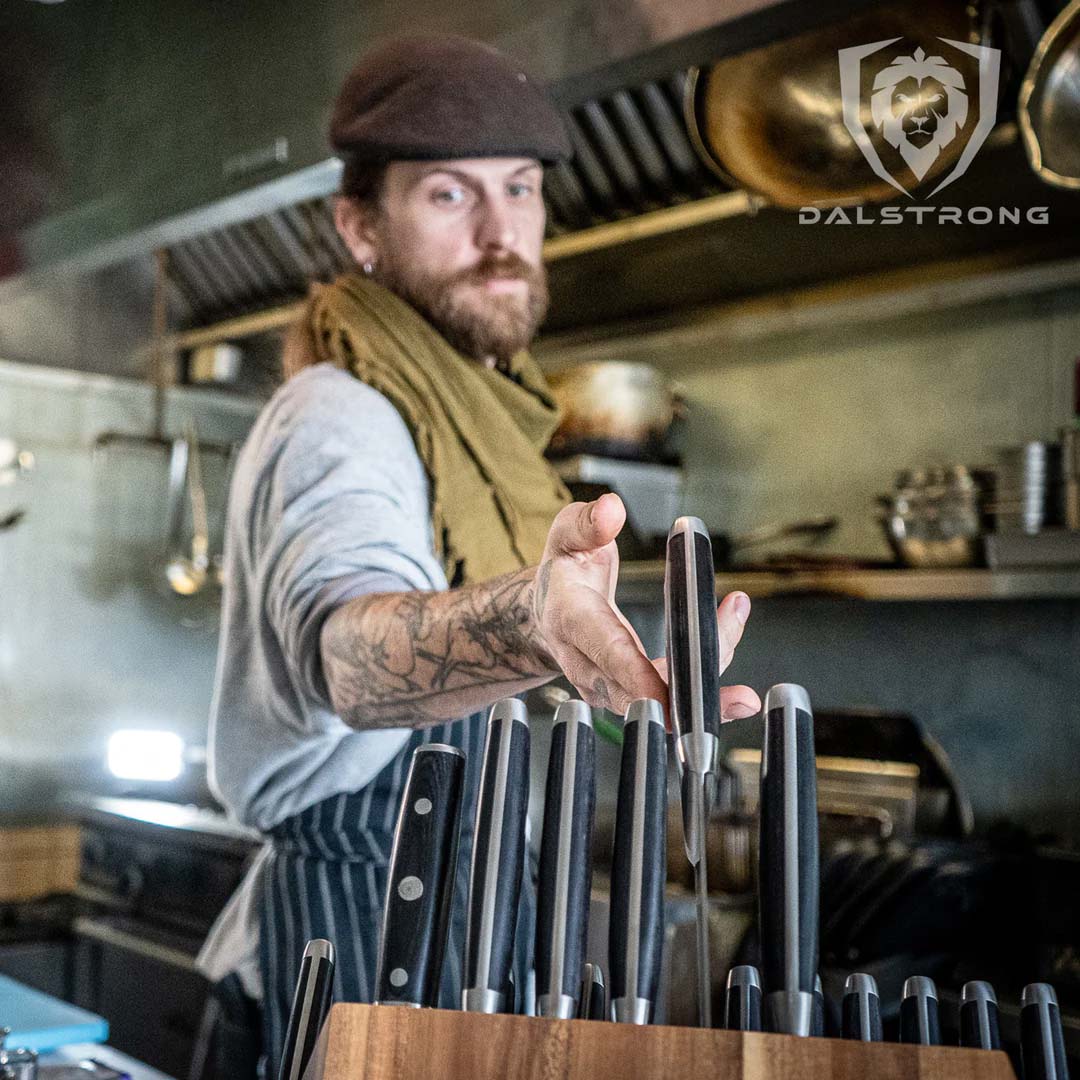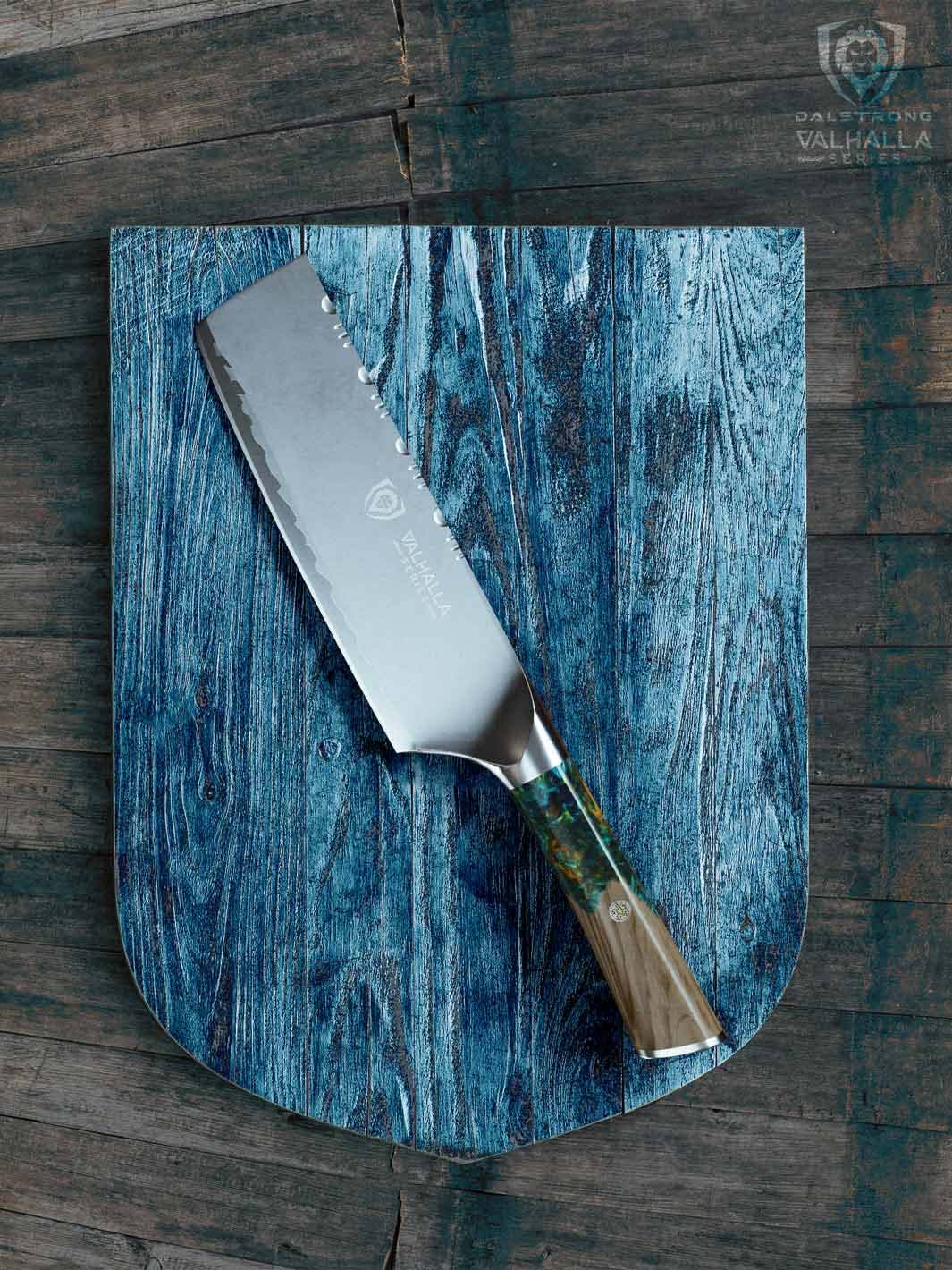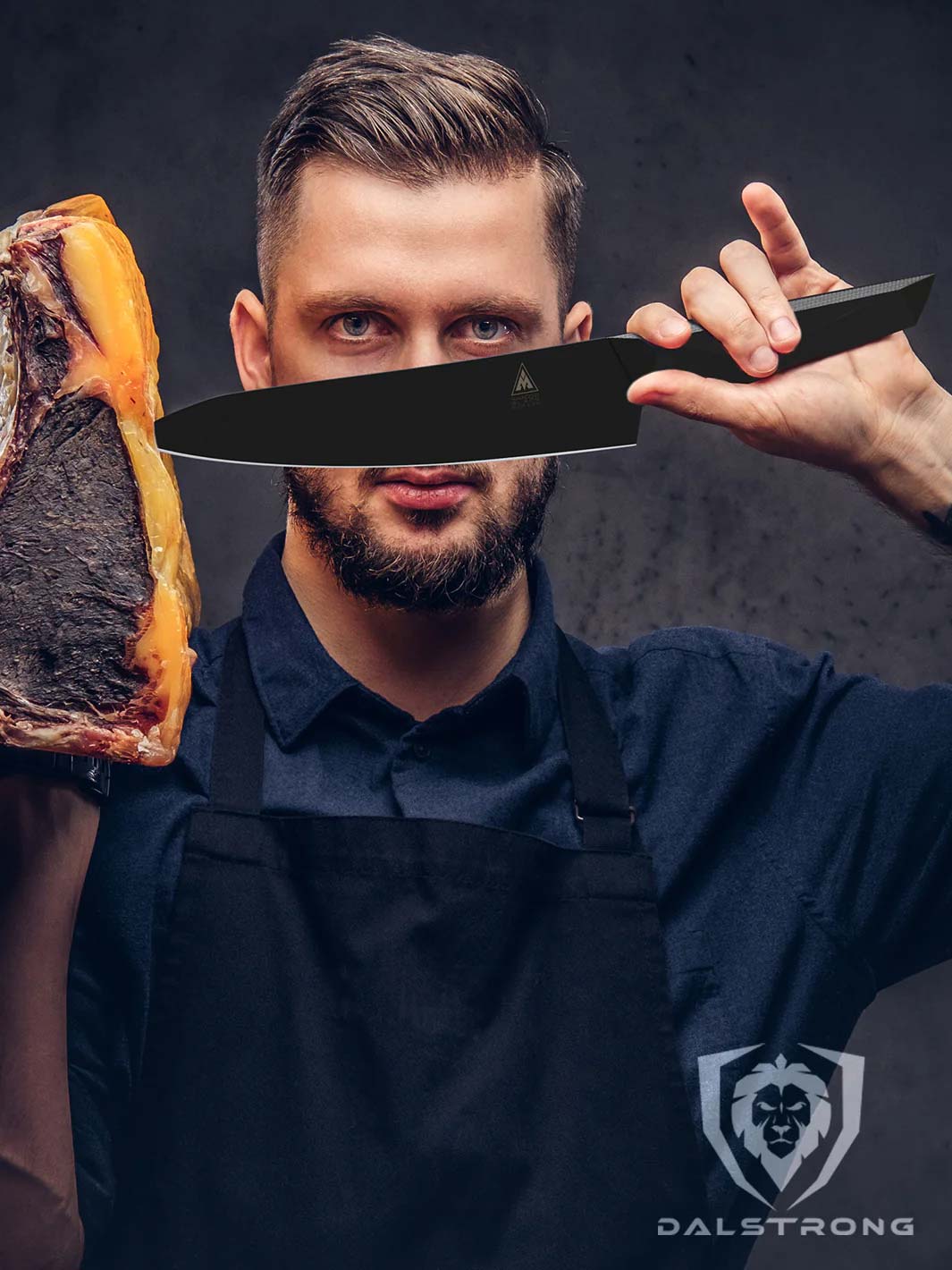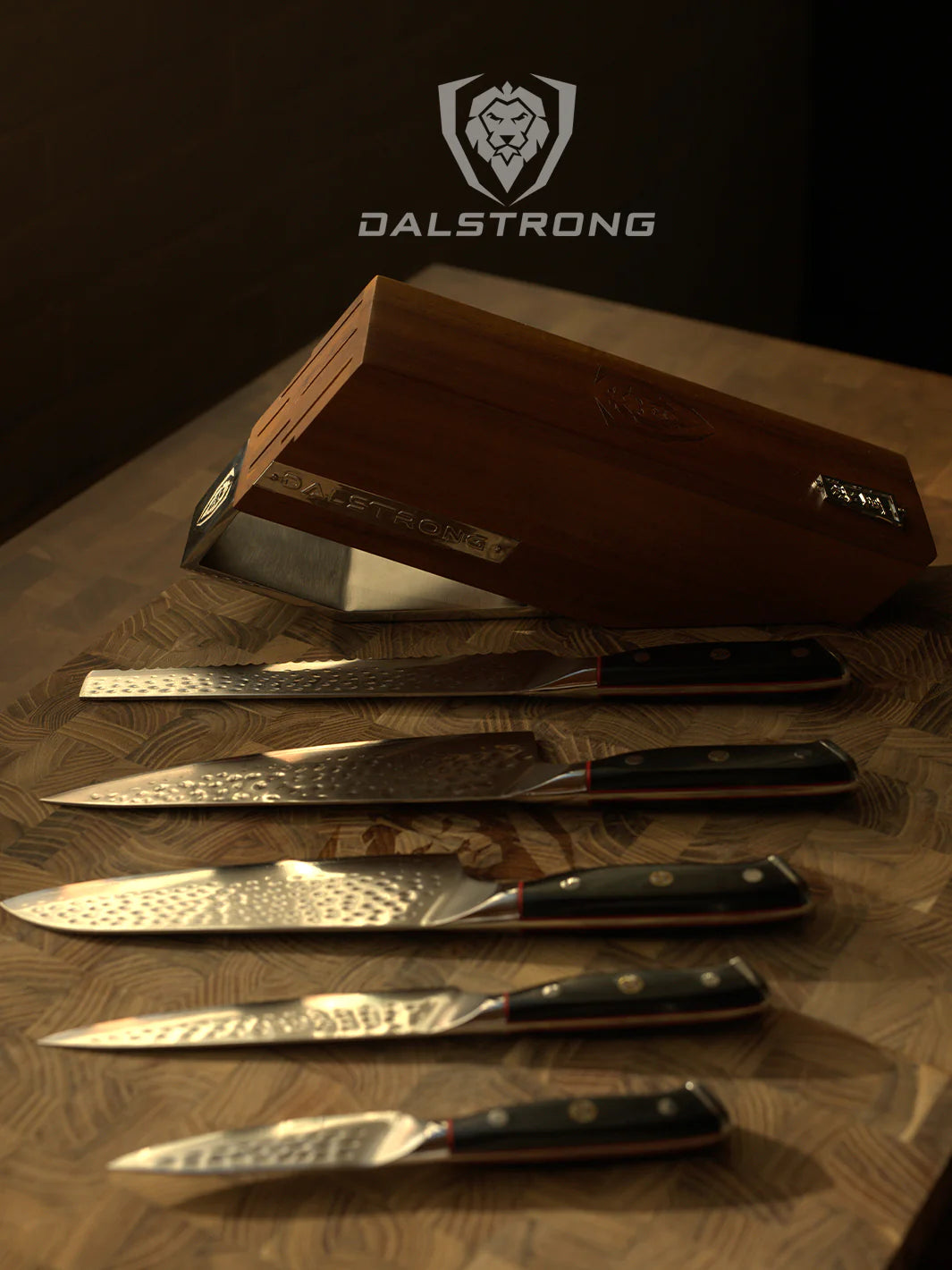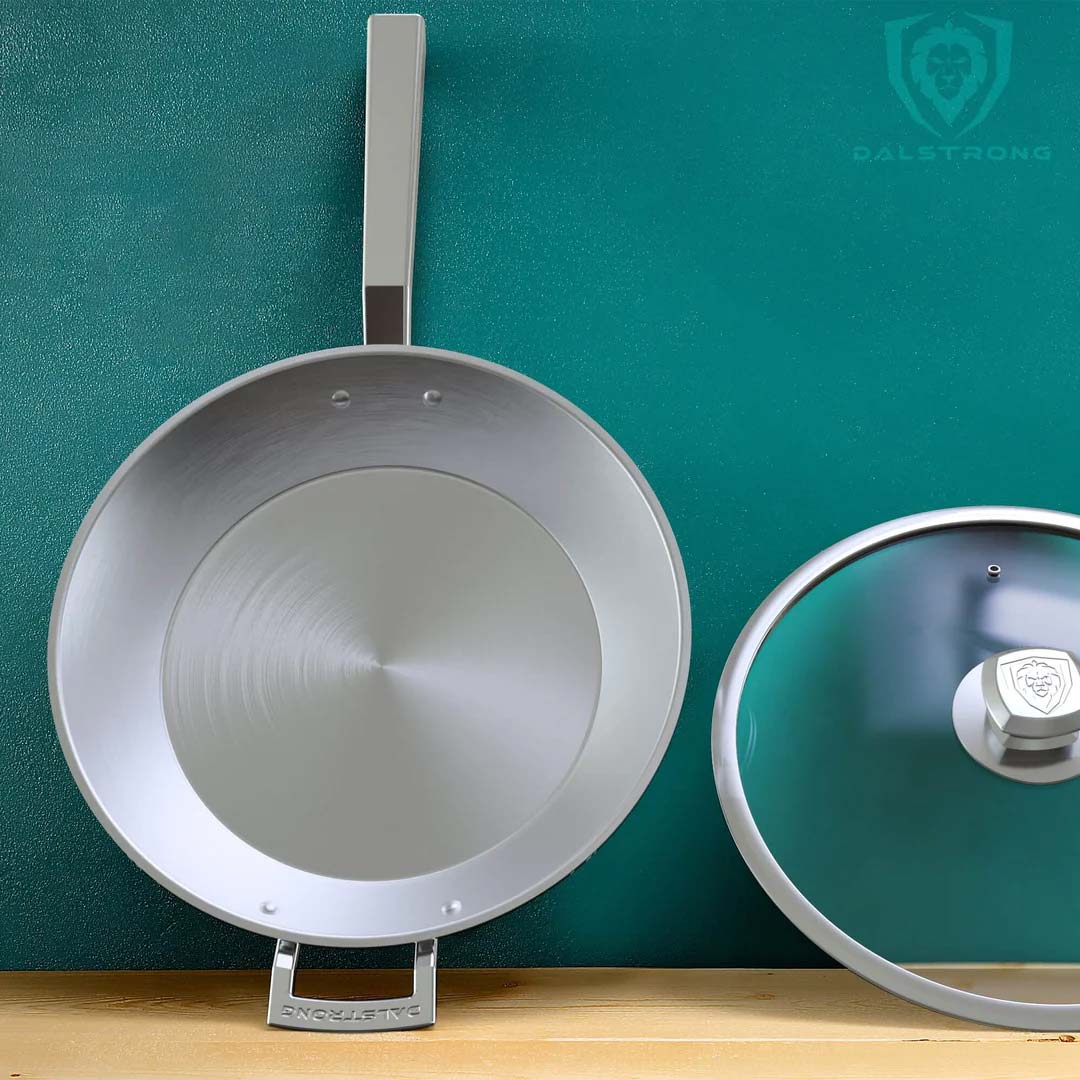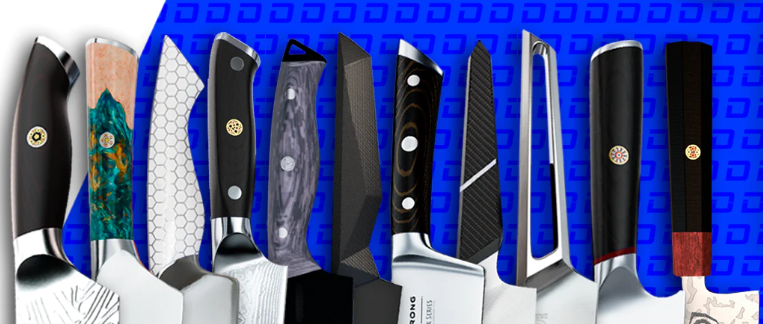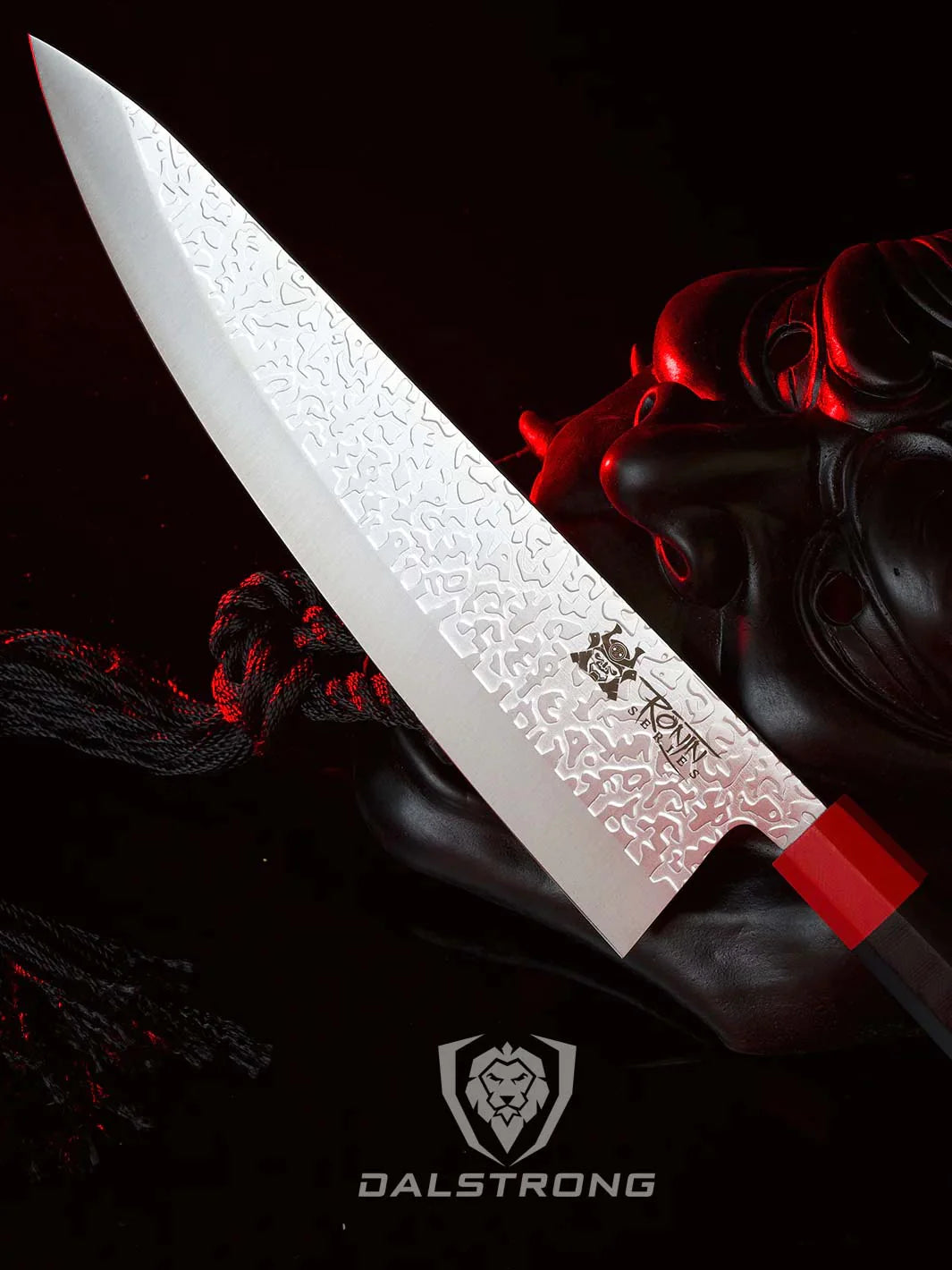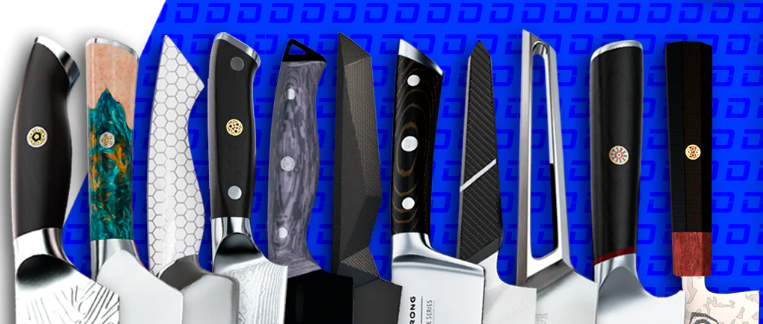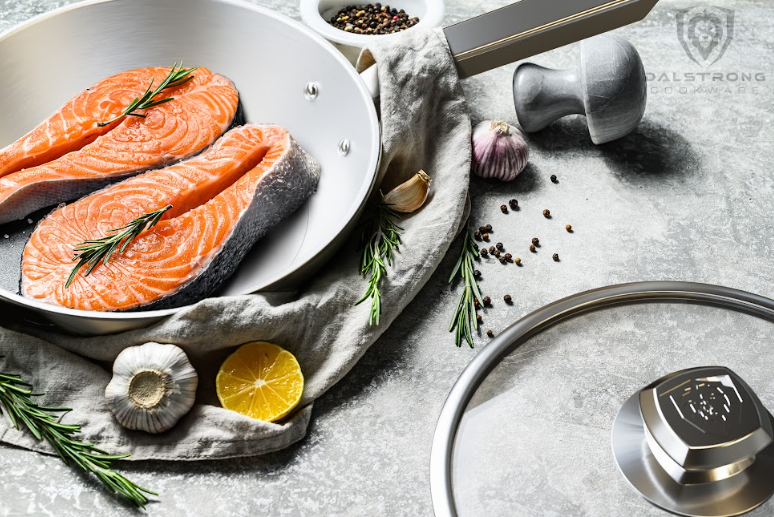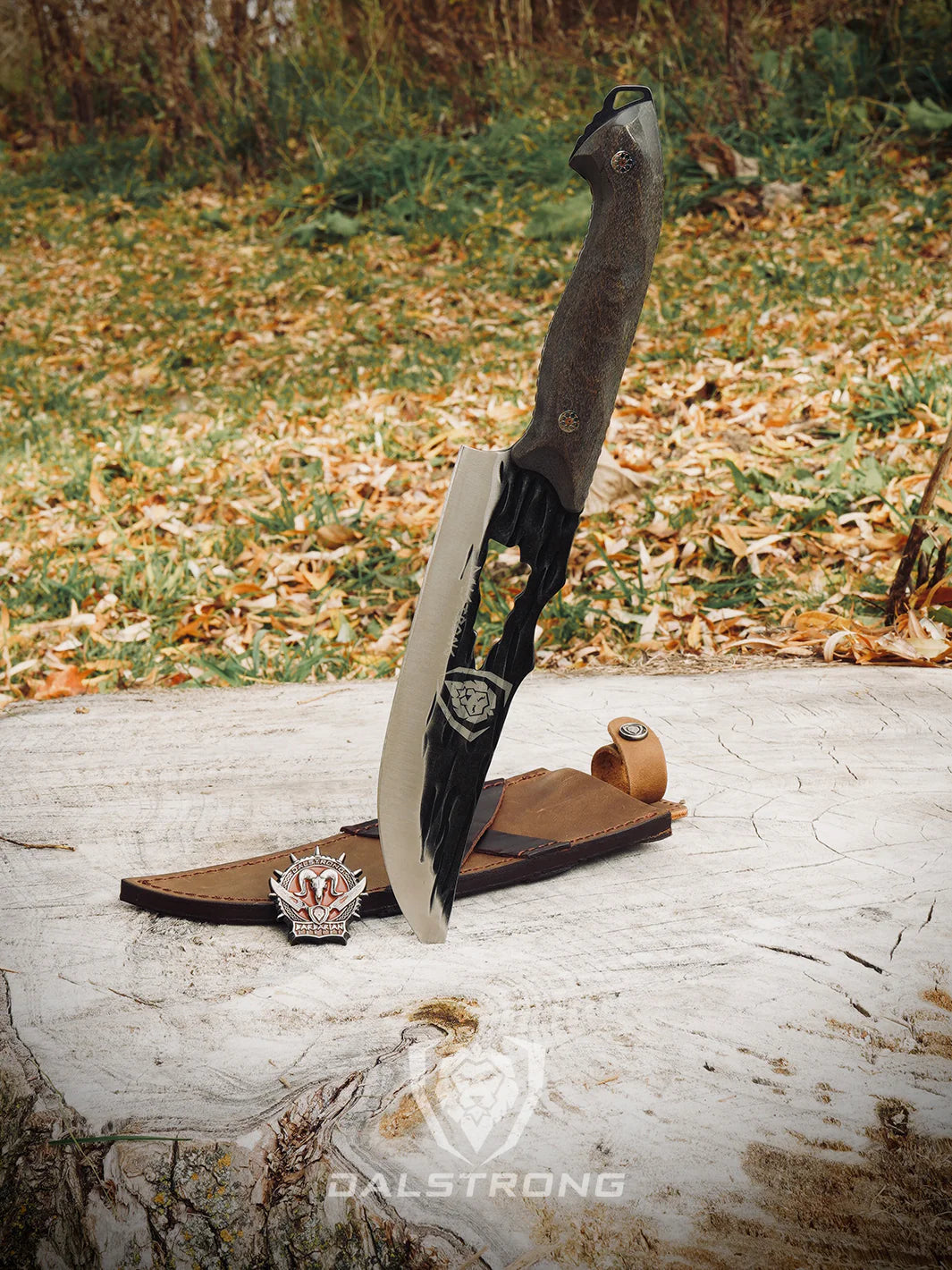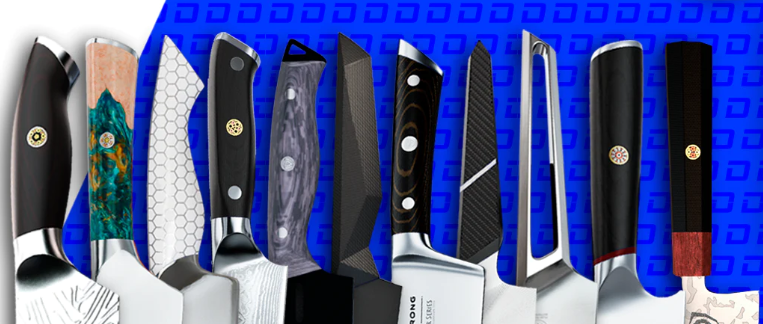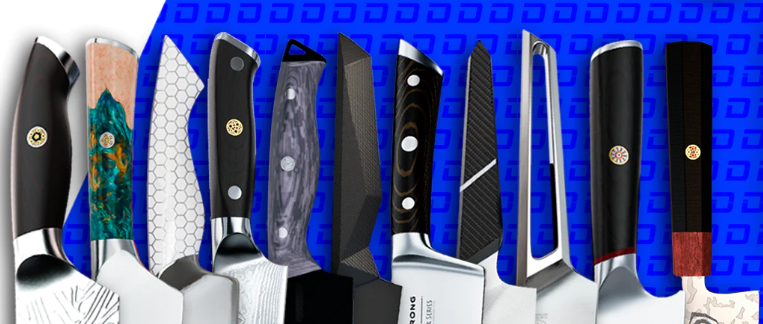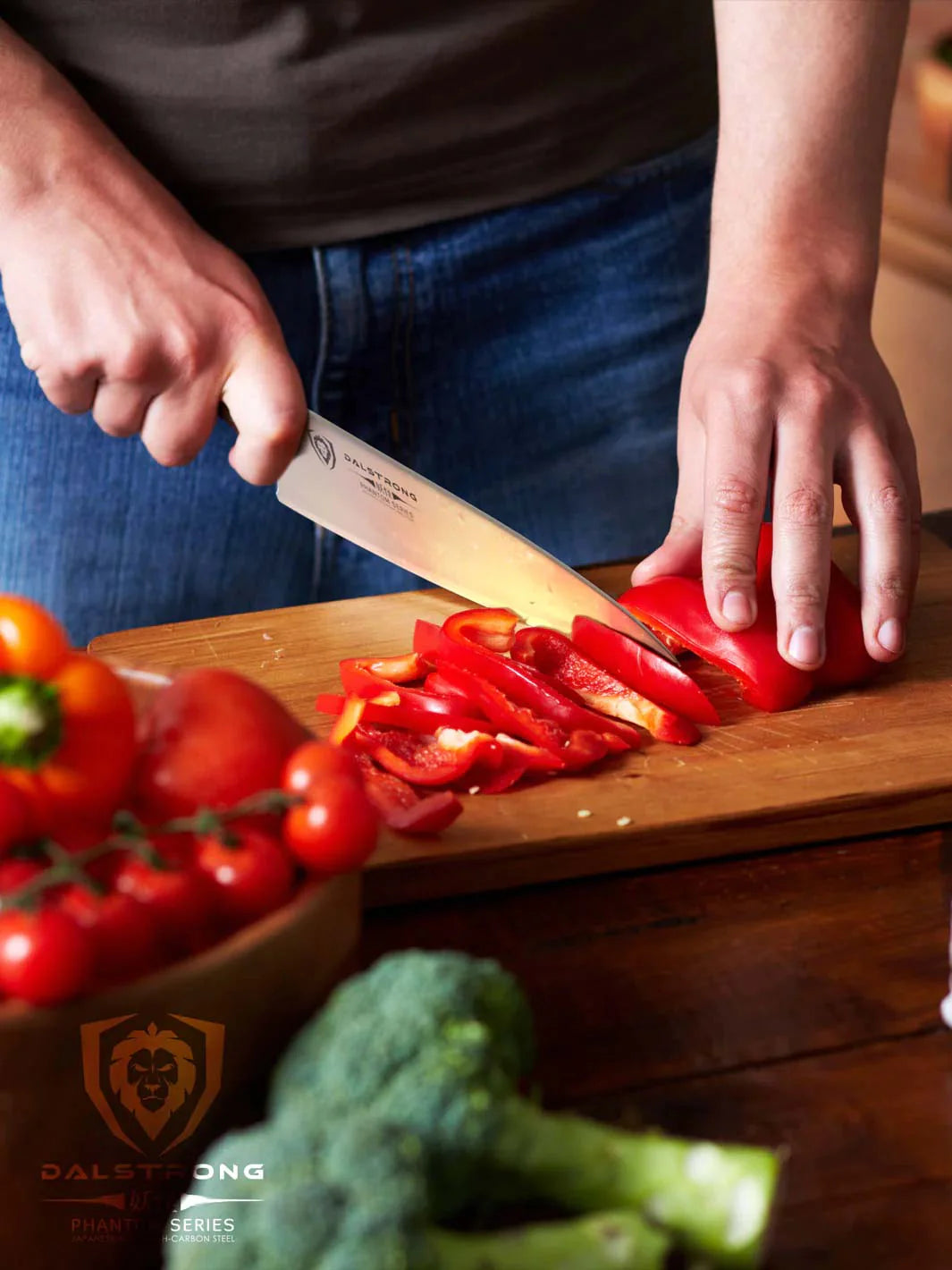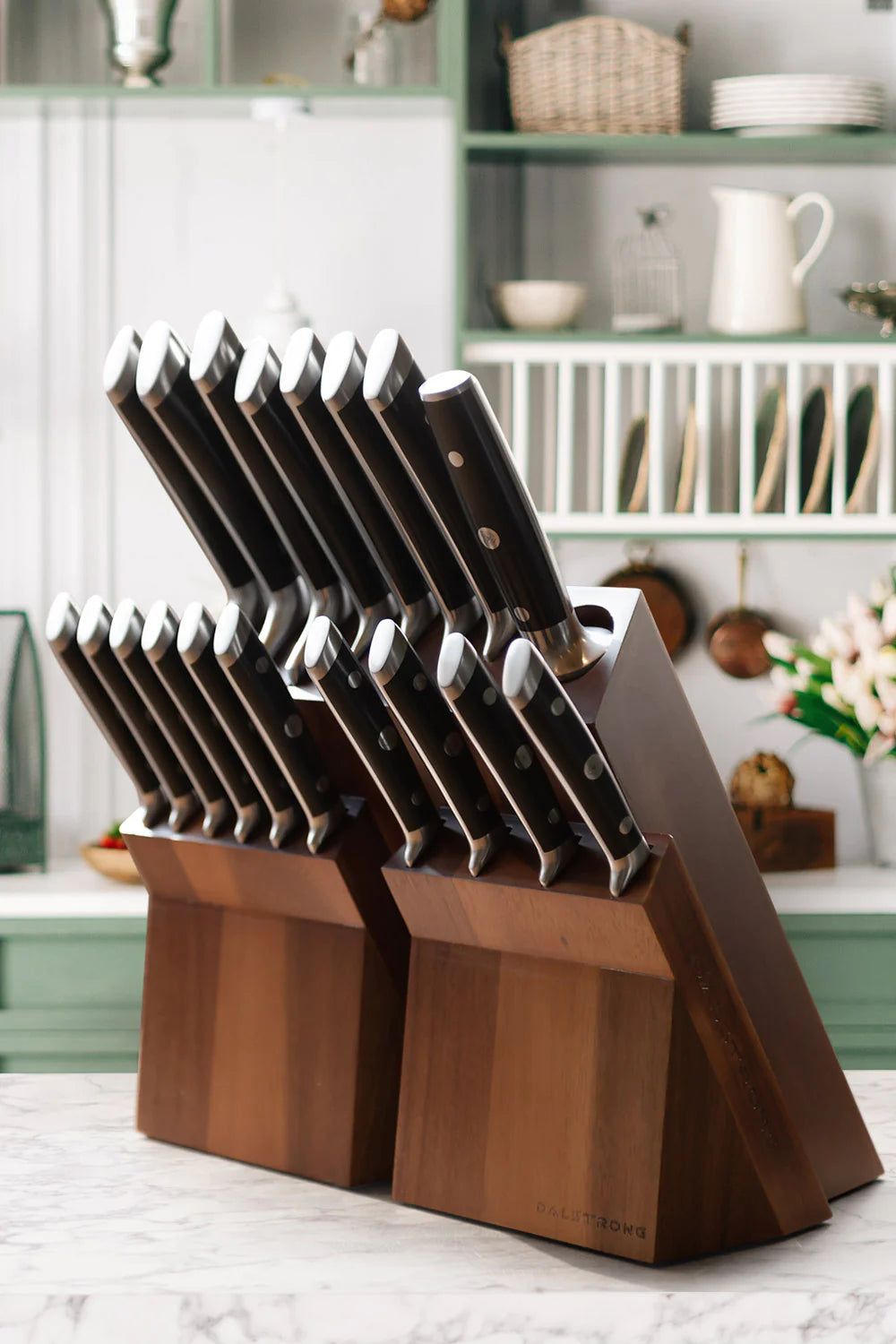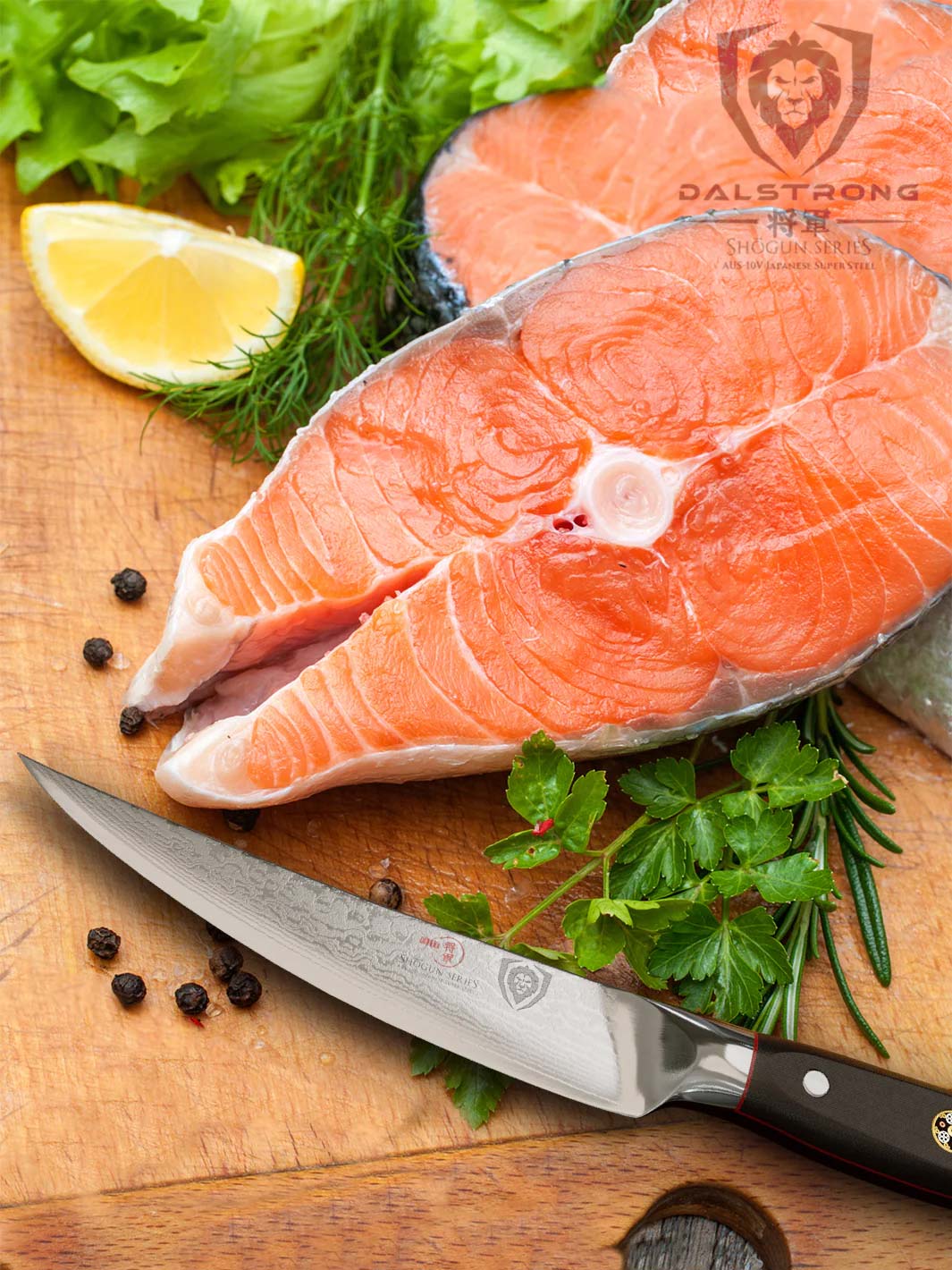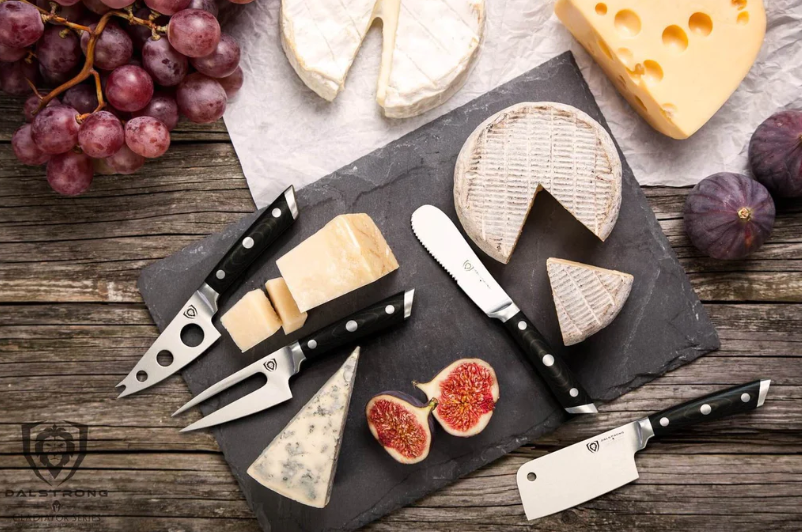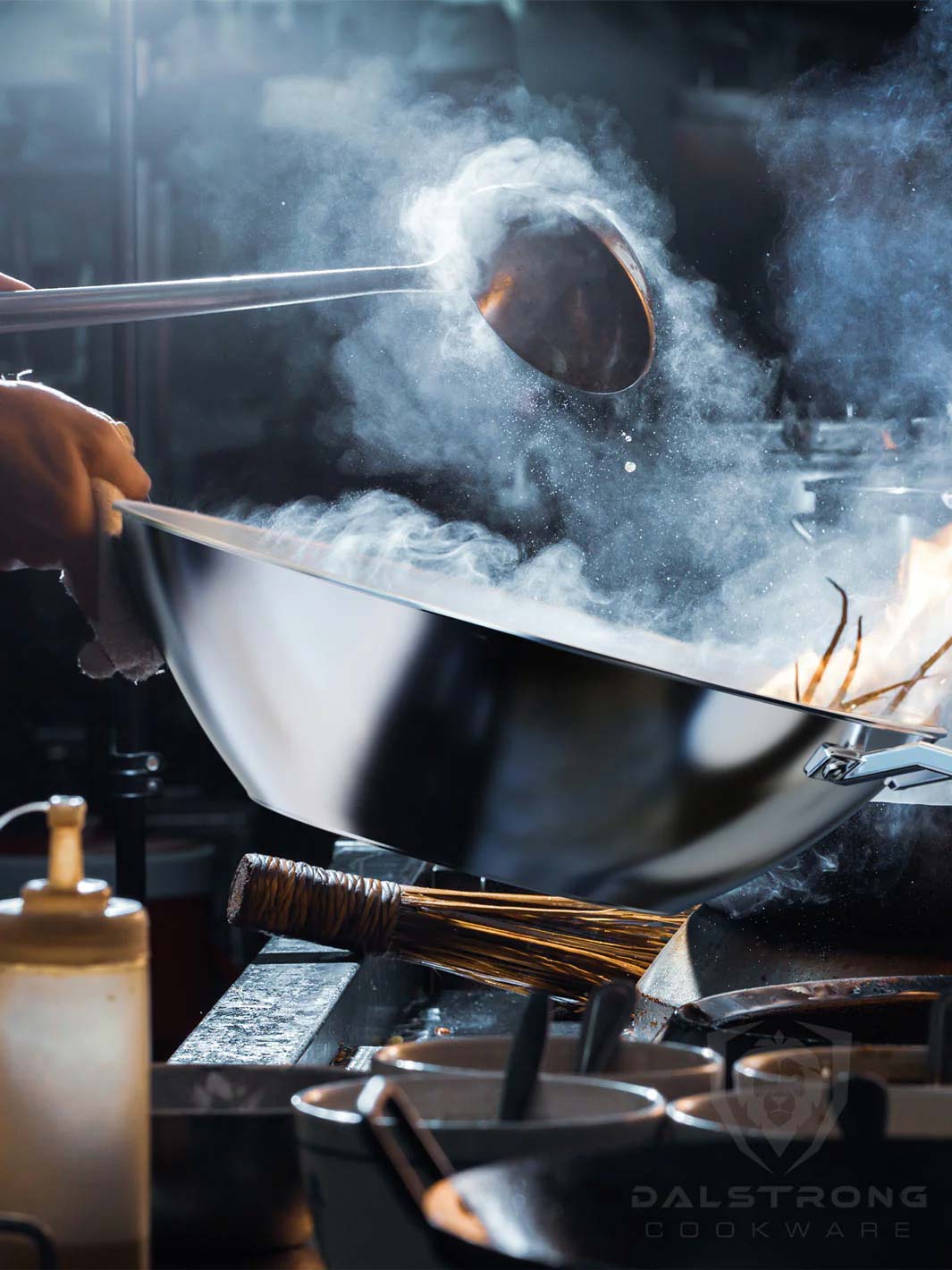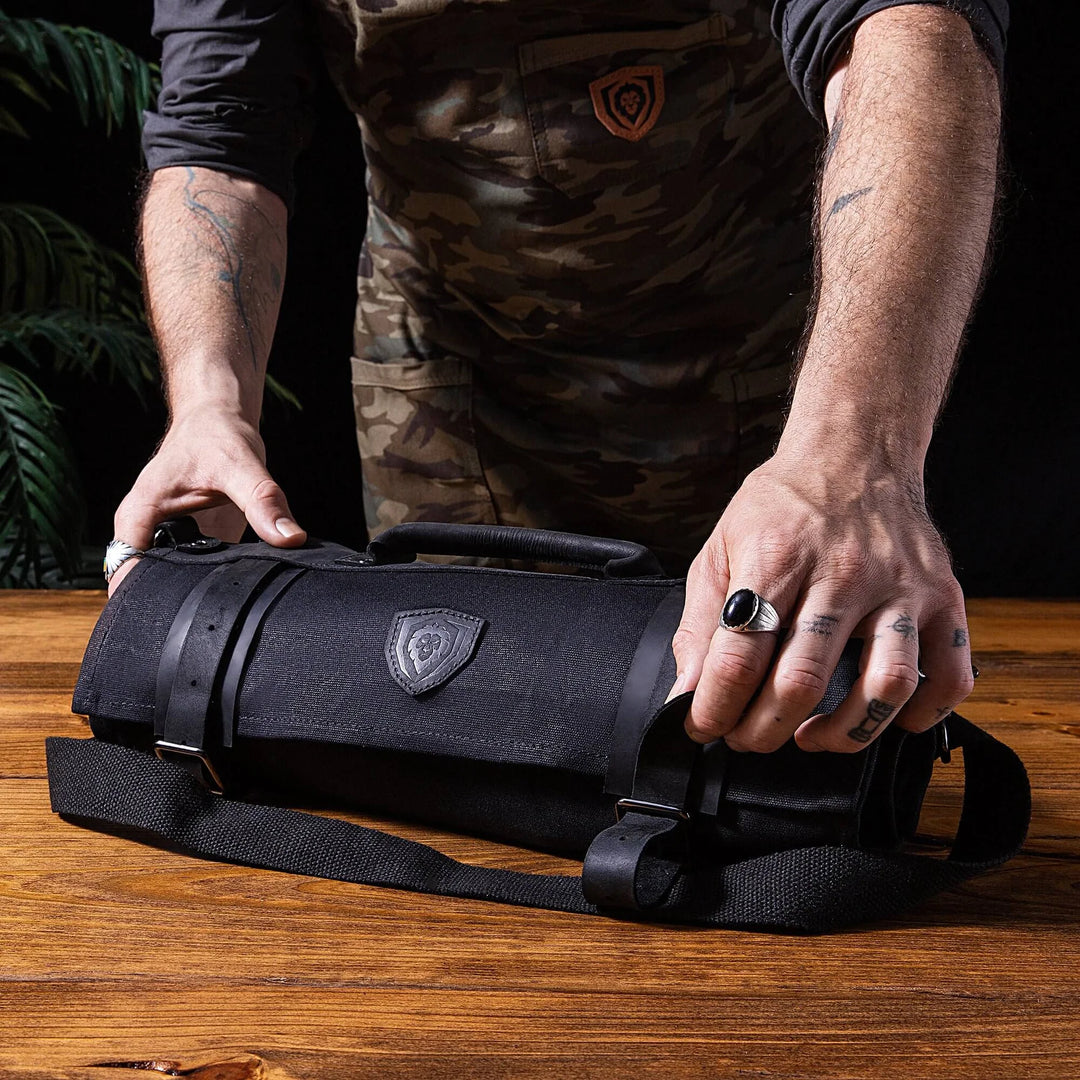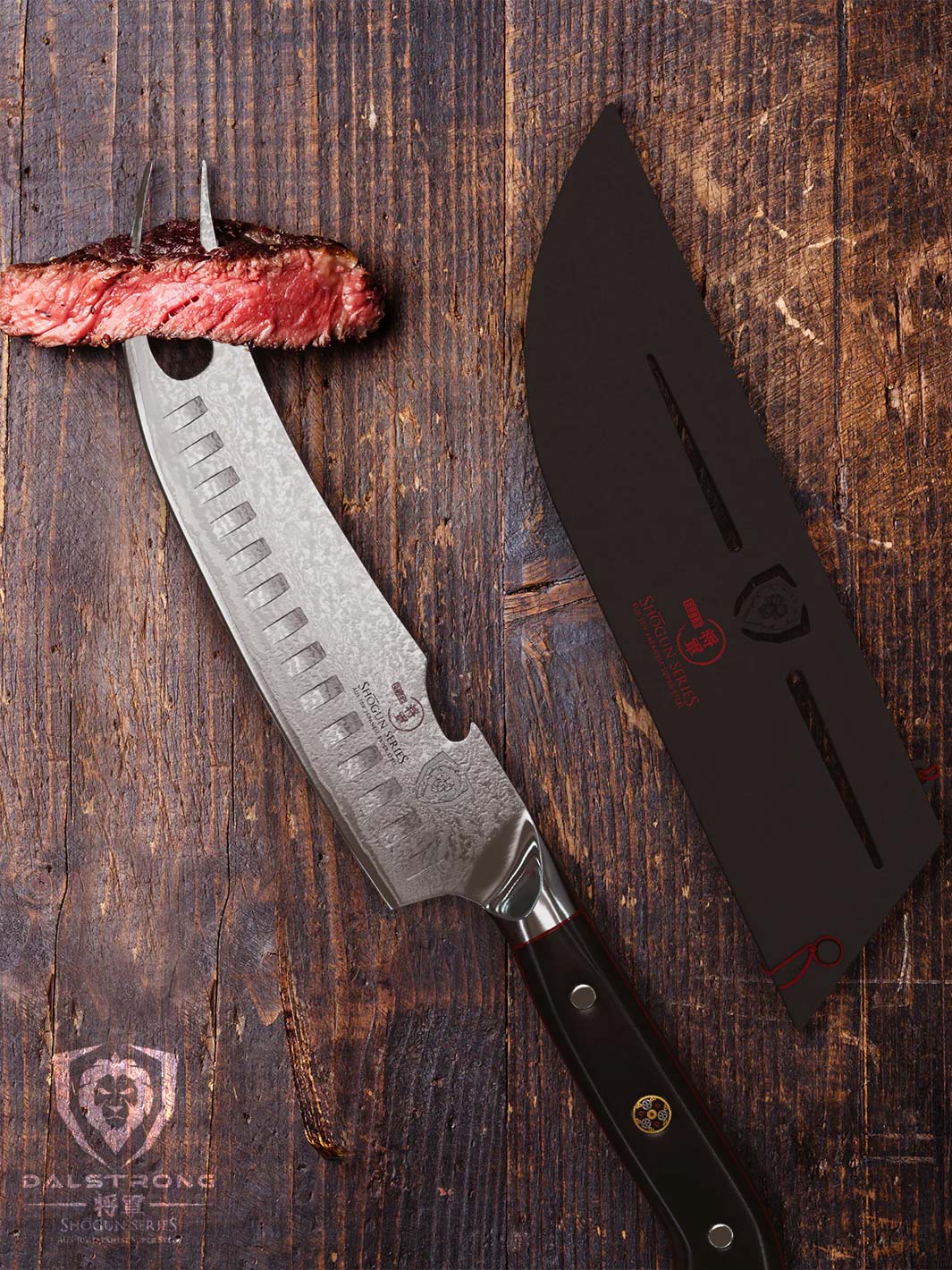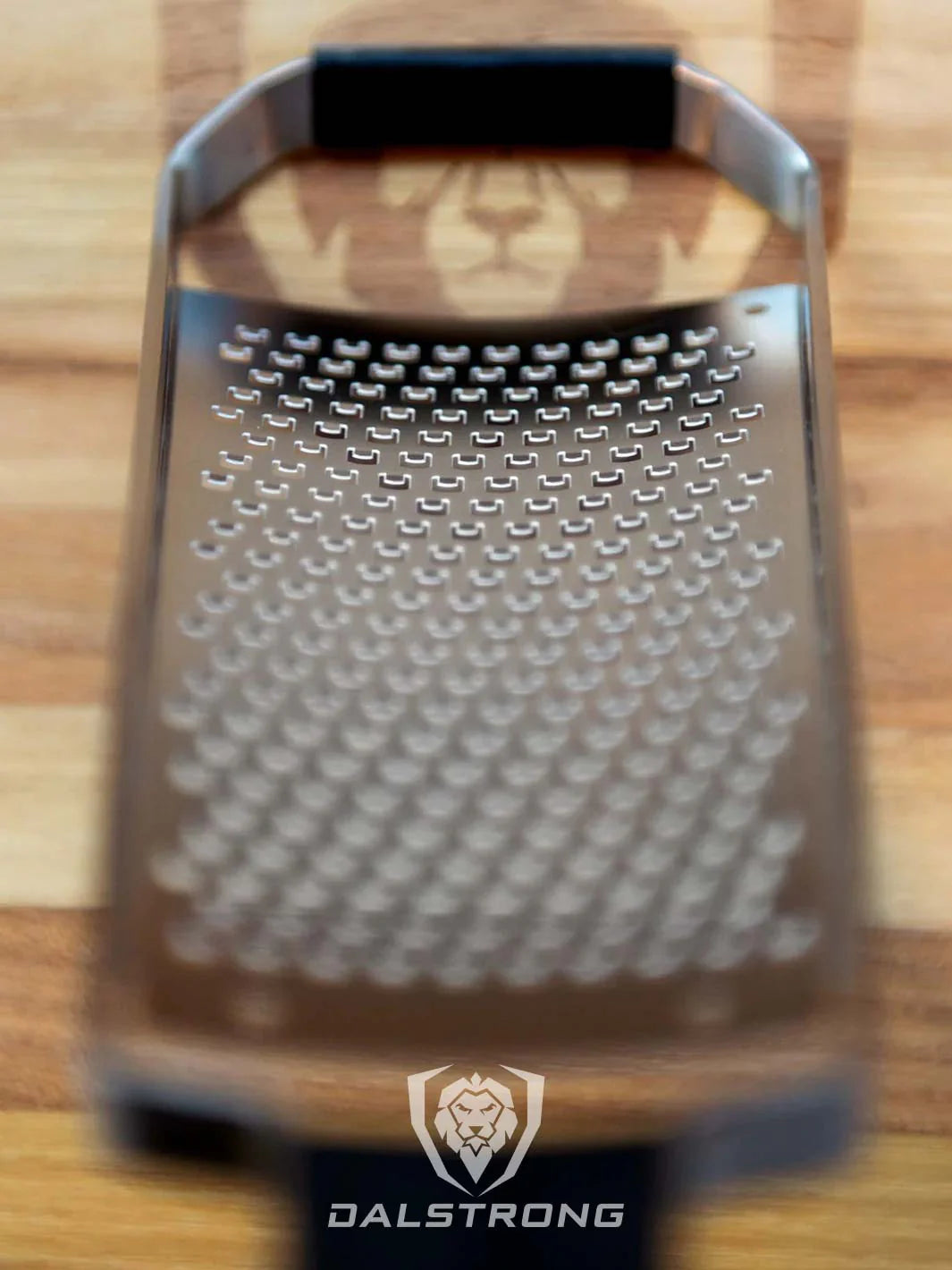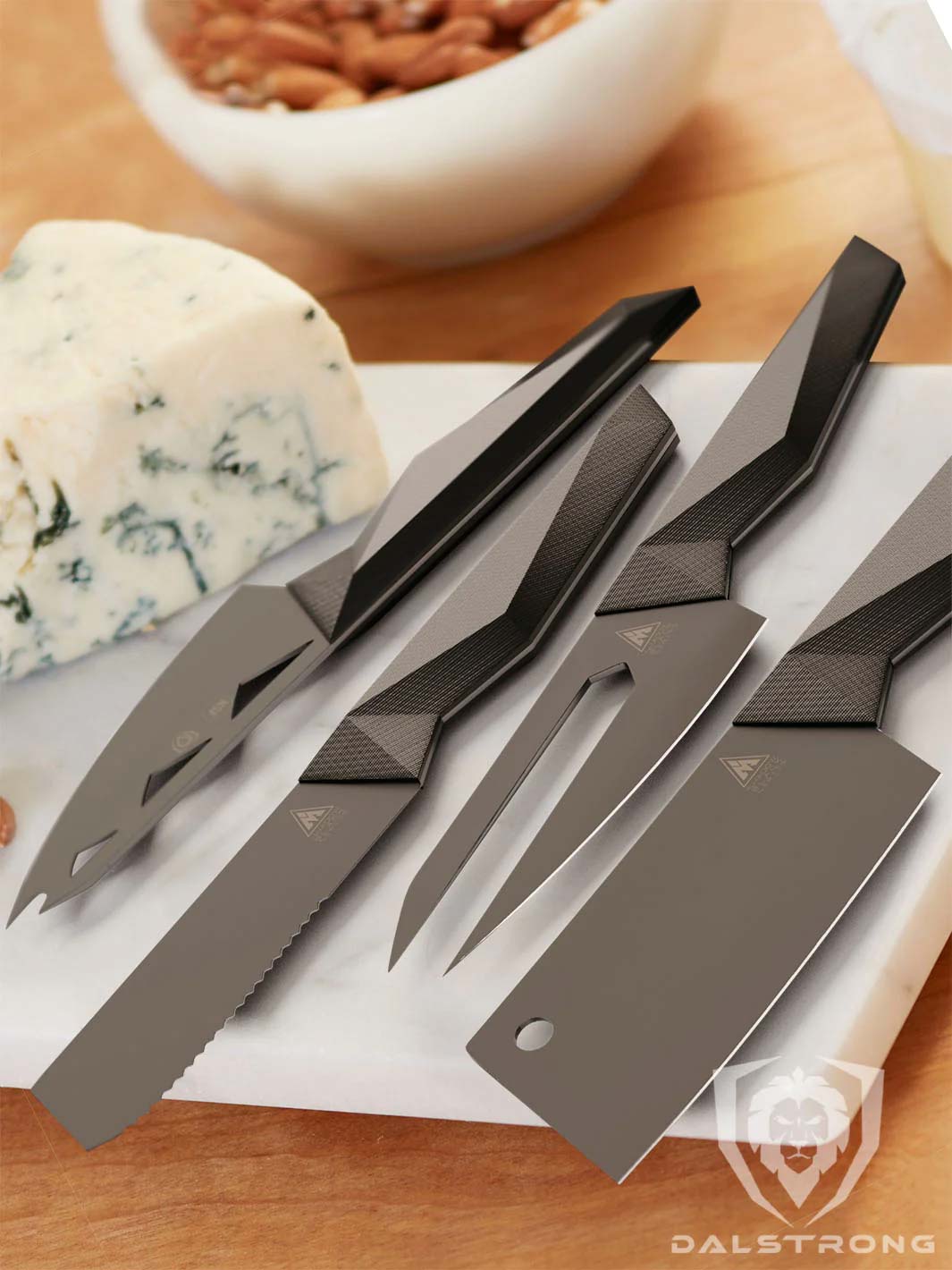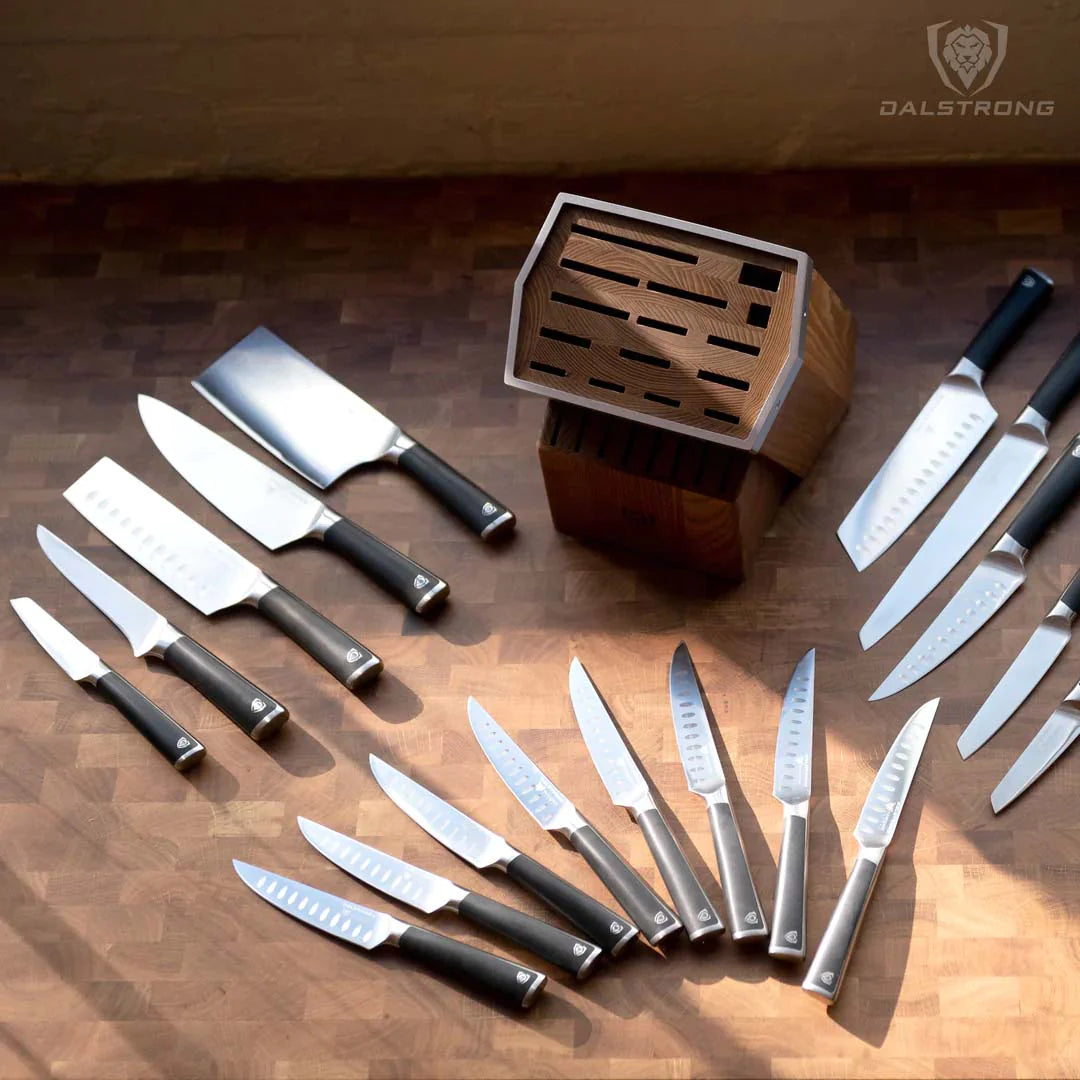You Need A Paring Knife. You Just Don't Know It Yet.
1. The Importance of the Paring Knife
4'' Paring Knife | Delta Wolf Series | Dalstrong ©
It was the wee small hours of the morning and I felt like having a late night snack. Much to my dismay, all that was in the fridge was an orange. My first instinct was to try to peel it with a bread knife, which didn’t actually go well. Back then, my resources in the kitchen were limited to say the least.
At this point, I was getting hangry and desperate - I even thought about giving my old chef’s knife a shot. I even considered busting out my trusted steak knives. But no, there had to be a better way. After taking a couple of deep breaths, I finally resorted to the only place where a knife obsessive like me could get all the answers - the Internet. Finally, I found out that what I was missing in my collection was this minute piece of cutlery called the paring knife. A little knife with a lot of power.
But which one is the best paring knife? And what does “paring” even mean? With all the content available out there, sometimes it’s hard to find a simple answer that will solve all your culinary dilemmas in one shot. Worry not, fellow knife aficionado, we’re here to dish out the answers and help you find the best paring knife on the market.
Come with us on this magical journey!
2. What Is a Paring Knife Used For?
Gladiator Series 2.75" Bird's Beak Tourne Paring Knife
Featuring a short yet sturdy blade, generally ranging from 2-4 inches long, the paring knife’s primary function is to peel the outer layer of fruits and vegetables. And yes, a peeler might do the job just fine but it’s nowhere near as versatile as a good paring knife. They’re pretty much built for precision - their small blade allows for maximum maneuverability and will excel at everything from coring apples and tomatoes to deveining shrimp or decasing sausages.
Another important thing to mention when talking about the paring knife is its portability. Its reduced size makes it super easy to carry, turning it into a handy tool to have around when you go out for a picnic or you simply need to whip up a delicious salad at a friend’s backyard BBQ. Whether on your outdoor adventures or at home in the kitchen, the paring knife is not only an essential part of any chef’s arsenal but also a great multitasking tool.
Note: It is of utmost importance that you keep your paring knife razor-sharp for optimal results. In order to maintain a sharp edge, please check out our knife sharpening tutorial here.
3. Why Is It Called a Paring Knife?
Crusader Series 3" Bird's Beak Paring Knife Peeler - NSF Certified
The paring knife receives its name from its raison d'être - it is mainly used to “pare,” meaning to peel the outer surface of an object. It is believed to have evolved from the couteau à parer, a tool used by 16th century French bookmakers to thin the edges of a book’s leather binding.
Back then, it used to feature a large piece of steel with a wooden handle but over time it evolved into the kitchen staple we now know and love. Nowadays, the paring knife blade is usually a lot shorter and it is generally made of stainless steel. It sometimes features a plastic handle, although wood is preferred in most cases.
The classic paring knife could be described as a smaller version of the chef knife, with a spear tip and a rounded belly.
Inside the paring knife family, you might also find what is called a “tourné” knife, aka bird’s beak paring knife, a type of knife with a curved blade that gets its name from the French technique used for peeling and cutting root vegetables into football-like shape that helps them to cook evenly. Oh là là!
Last but not least, you’ve got the sheep’s foot paring knife, which resembles a smaller version of a Santoku knife. Featuring a flat, straight edge, this kind of knife allows you to lean the entire length of the blade against the cutting board, effortlessly producing straighter, more precise cuts with minimal hand motion.
Serrated paring knives are also an option when a little sawing action is needed. These are usually a bit larger than regular paring knives and feature serrated dentures that are perfect for cutting fruits with waxy surfaces like tomatoes or plums.
4. What Is the Difference Between a Paring Knife and a Chef’s Knife?
The main difference between a chef’s knife and a paring knife is basically the length of the blade. No more, no less. While the blade length of most paring knives falls between 2-4 inches, the ideal chef’s knife should be somewhere between 7-12 inches.
The chef knife’s larger size and slightly curved blade allows you to work that classic ‘rocking motion’ that most seasoned chefs use when prepping their dishes. Also, paring knives are meant to be used with smaller items while chef knives are specially designed to work with medium to large-sized ingredients.
Halfway between a chef’s knife and a paring knife, you can find the utility knife, which possesses scalloped edges and might come in handy when the paring knife is just too small for the cutting task. The blade length of a utility knife usually falls between 4-9 inches and it also comes in the serrated variety.
Learn more about where Dalstrong Knives are manufactured here!
5. Great Paring Knife Options
If you’re a knife obsessive like me, you probably already know the classics - whether it’s a Victoronix paring knife or a Rada Cutlery one, you know these brands have been around for long enough to know they deliver great products. But that’s not what you’re here for. You need something new, something exciting that will add to your knife collection while bringing a little pizzazz into the mix. That’s why we’ve assembled this list of Dalstrong products to make sure you get the best paring knife out there.
1. Quantum 1 Series 4" Paring Knife
Featuring a single-piece, high carbon American BD1N-VX stainless steel blade and a fiber-resin military grade G10 handle, the Quantum 1 Series 4" Paring Knife looks like something out of a sci-fi movie.
But don’t be fooled by its sleek outer shell - this paring knife is not afraid to get down and dirty: from peeling a vegetable to cutting and slicing fruit into unique, intricate shapes, this one’s always ready for a challenge. This knife is your greatest ally while cooking.
Pros:
- Gorgeous “Nova Prime” blade pattern reduces drag and increases efficiency.
- Tall blade provides excellent knuckle clearance during the prepping process.
- Easy to clean.
- Rockwell hardness of 63+
Cons:
- The price point might be a little high for casual home chefs.
- More conservative chefs might find its futuristic looks a little too “out there.”
2. Crusader Series 3" Bird's Beak Paring Knife Peeler - NSF Certified
We wouldn’t blame you if you were slightly intimidated by the looks of this paring knife. After all, its design is inspired by medieval swords. With an aesthetic that resembles a weapon more than an actual knife, the Crusader Series Bird’s Beak Paring Knife is a merciless warrior that will accompany you on all your culinary battles.
With a single piece of German stainless steel that transitions into a high-chromium stainless steel handle, this beauty acts as both a paring knife and a peeler. Julienning carrots, pitting peaches, peeling potatoes - no task is too big for this small bird of prey.
Pros:
- ThyssenKrupp German stainless steel at 58+ Rockwell.
- Stain resistant.
- Hygienic design.
Cons:
- Some chefs might be turned off by its avant-garde looks.
- On that note, some chefs might also prefer separate tools for peeling and paring.
3. Shadow Black Series 4" Paring Knife - NSF Certified
Without a doubt, the Shadow Black Series 4” Paring Knife is one menacing piece of knifemaking. Its pitch-black Titanium Nitride coating and the unique geometry of its handle make it not only a ruthless performer but also a sight to behold for anyone who enters your kitchen.
This amazing cutting tool will allow you to cut thin, even slices of vegetables and proteins and even chiffonade herbs with minimal effort. Also, let’s face it: owning a paring knife like this will instantly turn you into the hippest chef on the block.
Pros:
- Laser-sharp, high-carbon 7CR17MOV-X vacuum treated steel blade for optimal performance and durability.
- The Titanium Nitride coating provides non-stick and corrosion-resistant properties.
- Unique design.
Cons:
- Some folks might prefer the looks of a regular paring knife.
- At 4”, it’s right on the limit for ideal blade length.
4. Gladiator Series 3.5" Serrated Paring Knife
A part of Dalstrong’s very own Gladiator series, this saw-toothed beauty is on a league of its own. Whether you’re trying to slice a small loaf of sourdough or cutting and slicing dried meat, the Gladiator Series 3.5” Serrated Paring Knife will surely become a trusted ally in your kitchen.
In addition, its German ThyssenKrupp Steel blade is also perfect for cutting garnishes into unique shapes and scoring patterns on your food in the most delicate yet efficient way.
Pros:
- Added chromium provides stain-resistant properties.
- Edge is painstakingly hand sharpened to 16-18° per side.
- The classy ergonomic G10 Garolite handle just screams “sophistication.”
Cons:
- The serrated blade might be a little tougher to sharpen.
- Given the chance to purchase just one paring knife, most people will go for a traditional one.
5. Shogun Series 3" Bird's Beak Peeling-Paring Knife
Another fine example of the “tourné,” or bird’s beak paring knife, the Shogun Series paring knife is a bona fide twofer: from fluting mushrooms to peeling apples, potatoes, or other small fruits and veggies, there’s nothing this knife can’t handle.
Inspired by centuries of Japanese artisanship, the Shogun is sure to turn heads in any kitchen you walk into - featuring Dalstrong’s “Tsunami Rose” pattern on its blade, this knife just won’t be ignored.
Pros:
- A 67-Layered Damascus steel blade sharpened under the ancient 3-step Honbazuke method.
- Rust and corrosion-resistant.
- Ergonomic handle impervious to heat, cold, and moisture with a non-slip grip.
Cons:
- As we’ve established before, some people will prefer separate tools for different purposes.
- The price point might be a little high for amateur chefs.
6. Gladiator Series 2.75" Bird's Beak Tourne Paring Knife
Another entry of Dalstrong’s Gladiator series, this bird’s beak paring knife is one of the books. With a powerful German ThyssenKrupp stainless steel blade painstakingly sharpened to 16-18° per side, you can now create unique garnishes for your cocktails and peel fruits and vegetables with ease.
At 2,75”, its blade is pretty much designed to get to the nitty-gritty, making intricate cuts with laser-sharp precision.
Pros:
- Excellent price-quality relationship.
- Robust, full-tang blade for peerless performance.
- Triple riveted handle for maximum durability.
Cons:
- Its short blade length makes it a little limited in terms of versatility.
- If you’re gonna invest in just one paring knife, you might wanna check out something on the higher end of our list.
7. Phantom Series 4" Paring Knife
If we’re talking paring knives, no list would be complete without the Phantom Series 4” Paring Knife. Even though it features the kanji for “phantom” or “ghost” on its blade, this cold-blooded killer is anything but subtle - peeling and slicing vegetables and fruits will feel like a breeze with its hefty Japanese AUS-8 steel blade. Clearly, this stone-cold assassin could give any Japanese knife a run for their money.
Pros:
- High levels of chromium provide stain resistant properties.
- Pristine hand-polished satin finish blade.
- Laminated pakkawood handle imported from Spain.
Cons:
- At 4”, it’s right on the limit for ideal length size.
- Some chefs might prefer Western-style paring knives.
6. What to Look for in a Paring Knife?
Shadow Black Series 4" Paring Knife - NSF Certified
Type of Blade
If you’re looking for the best paring knife out there, you definitely wanna look at how its blade was made.
Forged blades have a heavier feel overall and they’re less likely to bend or break but they’re also more expensive.
On the other hand, stamped blades are more common in more affordable paring knives. Definitely try to avoid these, since they’re thinner and not as durable as their tapered counterparts.
In our humble opinion, you should always go for a forged blade paring knife. Yes, they’re a bit more costly but they will last a lot longer.
Blade Material
In terms of material, stainless steel is the standard in the market. It’s strong, inexpensive, and it won’t bend easily.
Another common material that you’ll find is high-carbon stainless steel, which is stronger than stainless steel but also more rigid, meaning it can snap with time.
Although they exist, it’s really hard to find a ceramic knife. Out of the three, the ceramic blade is by far the strongest. It’s also extremely rigid, which could also lead to snapping.
To sum it up, try to stick to stainless steel. Either standard or high carbon, you can’t go wrong with a stainless steel knife.
The Handle
When it comes to cutting, dicing, and slicing, you want a paring knife that will just tuck into the palm of your hand. The material is not so important here - whether it’s plastic, wood, or steel, it is of vital importance that you choose an ergonomic handle to avoid hand fatigue and prevent accidents.
Shop Great Paring Knives Today
70 Day Money Back Guarantee with ALL Dalstrong Knives.
You can also check in with our Expert Knife Finder Quiz and get specific recommendations based on your needs.
Written by Pablo Perez
When he's not adding way too much butter to his recipes, Pablo likes to write about knives, music, food, cinema, and all of the other things that make life worth living.















































































































































































































